In the current global climate, the demand for stable and dependable infrastructure within the realms of power and communication has reached unprecedented levels. The conduit through which connectivity and power are channeled is significantly important in any such powerful system. Due to their incredible strength, flexibility, and low cost, HDPE has quickly become the preferred option for contractors looking for conduit materials. This article takes the reader through the various uses and the major advantages of HDPE conduit pipes and sheds light on the reasons they are regarded as the best for modern electrical and telecommunication systems. Conduit pipes made from High-density polyethylene are cheap and easy to install and require little maintenance, making them a modern and sustainable advanced infrastructure material.
What is HDPE Conduit Pipe, and Why is it Important?
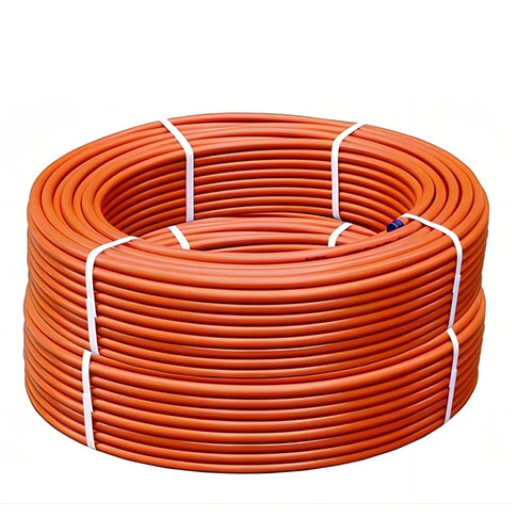
With expertise in the field, the HDPE conduit pipe is also known as a high-density polyethylene pipe, a plastic that has a high strength-to-density ratio. The necessity of these pipes is based on their outstanding toughness, corrosion, chemical resistance, extreme conditions, and temperature. HDPE conduits are light in weight yet strong, so their installation can be carried out economically on various terrains, which also saves on transportation costs. Their elasticity also permits the installation of long segments of pipe with few joints and hence reduces the chances of leakage. The significance of HDPE pipes is in the advent of providing efficient and effective solutions for power and communications networks for a diverse range of environments and applications.
Understanding HDPE Conduit
HDPE conduit pipes transform the design and construction of infrastructure, I believe Their strength and adaptability cater to the needs of today and tomorrow. As far as HDPE conduits are concerned, I have not seen anything better in terms of protection from harsh weather or chemicals. They certainly offer a competitive edge in the installation of large, dense underground networks due to their flexibility and ease of construction. I’ve also seen the dramatic cutting of the installation time and cost for maintenance, which, in the end, improves the duration and costs of the overall project. This places the HDPE conduit in the trenches to enhance the development of effective and robust infrastructure ecosystems.
The Role of Polyethylene in HDPE Pipe
I can say, as an industry veteran, that the backbone of HDPE pipes is polyethylene, which provides pipes with exceptional properties. Let us start with the role of polyethylene by dividing it into specific parameters :
- High Strength-to-Density Ratio: With high strength to weight ratio, there would be no issue in using Polyethylene for HDPE conduit manufacturing. This ratio ensures that the pipes are sufficiently thick to prevent collapsing under heavy loads while being light in nature.
- Durability: With the use of polyethylene, it helps in calculating the lifespan of HDPE pipes fairly accurately as it is quite durable. This aids the pipes in avoiding damage due to excessive usage over extended time periods and tackles broad ranges of external factors.
- Resistance to Corrosion and Chemicals: Polyethylene is a good performer among the thermoplastics since it displays an excellent resistance to corrosion particularly in terms of chemical reactions. This resistance is beneficial for the performance of the pipes in extreme conditions.
- Flexibility: With the use of polyethylene, HDPE pipes are more flexible, which eases installation for long continuous sections with fewer joints all of which results in fewer leak connections. This flexibility lowers potential weak points in the structures of engineering work.
- Environmental Adaptability: Polyethylene also makes the HDPE to endure harsh surfaces in terms of temperature and pressure expansions. This feature is necessary to endure the conditions which changes rapidly while still offering an unyielding performance.
To sum up, the essential characteristics of polyethylene contribute to the increase of capabilities of HDPE pipes as well as compliance with the requirements of contemporary construction projects.
Benefits of Using HDPE Conduit for Telecommunications
In regards to the telecommunications field, the employment of HDPE conduit has many advantages, which explains why it is a popular choice among practitioners. Let’s take a look at some of these advantages:
- Superior Protection: With high strength to weight ratio, there would be no issue in using Polyethylene for HDPE conduit manufacturing. This ratio ensures that the pipes are sufficiently thick to prevent collapsing under heavy loads while being light in nature.
- Ease of Installation: With the use of polyethylene, it helps in calculating the lifespan of HDPE pipes fairly accurately as it is quite durable. This aids the pipes in avoiding damage due to excessive usage over extended time periods and tackles broad ranges of external factors.
- Cost-Effectiveness: Polyethylene is a good performer among the thermoplastics since it displays an excellent resistance to corrosion particularly in terms of chemical reactions. This resistance is beneficial for the performance of the pipes in extreme conditions.
- Scalability and Future-Proofing: With the use of polyethylene, HDPE pipes are more flexible, which eases installation for long continuous sections with fewer joints all of which results in fewer leak connections. This flexibility lowers potential weak points in the structures of engineering work.
- Environmental Suitability: Polyethylene also makes the HDPE endure harsh surfaces in terms of temperature and pressure expansions. This feature is necessary to endure the conditions which changes rapidly while still offering an unyielding performance.
Larger energy companies operating through the mass media can handle the telcos’ identifying these parameters, and thus transport communication through a reliable, safe and cost effective HDEP conduits.
How to Choose the Right HDPE Conduit Pipe for Your Needs?
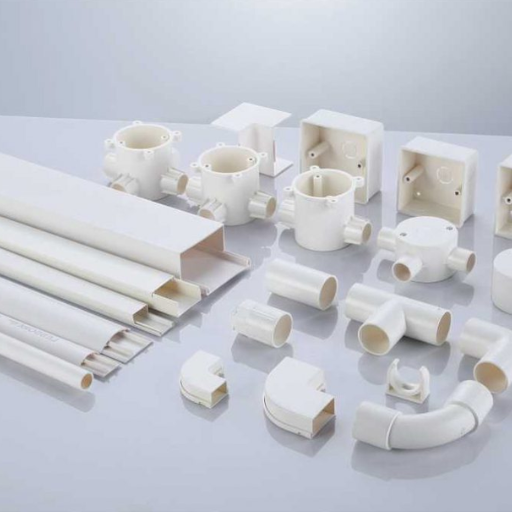
it is quite clear that there are several considerations to take into account when selecting an HDPE conduit pipe. To begin with, one should define the environmental conditions under which the conduit is going to be installed. Such factors as temperature range, humidity, or even chemicals in ambient air are really important because HDPE conduits are quite functional in this aspect. Then, analyze the capacity requirements of your network; make sure that the dimensions of the conduit match the current and estimated amounts of cables to be loaded onto the system. Flexibility and ease of installation are important features to consider, for it will always be more desirable to use an efficient installation product, which will save on time and labor costs. Last but not least, do not forget to consider the total cost of ownership, including not just physical installation costs but also costs that would be incurred in the future for maintenance and validation of any scaling requirements. Taking these factors into consideration would help you ensure a smooth and active deployment and utilization of the HDPE conduit pipe of your choice.
Evaluating Different Conduit Types
There are several parameters I always take into consideration while drawing comparisons between different types of conduits. Allow me to explain them sequentially:
- Protection Needs: First, I look at the level of protection that should be in place for the cables. In this regard, incoming pipes made of high-density polyethylene (HDPE) excel as there is great protection from moisture, chemicals and damage from the environment.
- Installation Complexity: I also check for conduits that do not require a lot of installation effort. There are advantages to HDPE conduits as they are light and flexible, which makes the process much simpler. Furthermore, because there are fewer joints needed to cover long runs, the overall installation is less complicated.
- Cost Over Time: A second point worth mentioning is the cost knocked. HDPE conduits are not prone to corrosion, and they are also tough, which means that maintenance costs reduce with time.
- Scalability: An important consideration is how well the network can accommodate expected developments. I take special care that expansion of demand will not outstrip the capacity of the conduit. This is valuable as HDPE conduits allow for easy expansion and upgrades.
- Environmental Conditions: Finally, I examine whether the environmental conditions in which the conduit will be used is fit for purpose. Their versatility is advantageous for instance in HDPE conduits as they are ideal in extreme temperatures and high pressure.
Thus, from adopting these parameters, I can adequately choose the appropriate type of conduits for every one of the projects. Generally, these considered attributes of HDPE conduits have contributed to their being the preferred ones in most instances.
Standard HDPE vs. Other Materials
Answering Common Questions: Standard HDPE vs. Other Materials
When choosing between standard HDPE and alternative materials for conduits, let us analyze the factors that affect the selection:
- Protection Needs: Among the materials used for covering cables, HDPE conduits are the best and most sought after because they are able to resist moisture, chemicals, and physical force thereby ensuring the safe-handling of the cables. However, in rough conditions, materials like PVC may not provide the same protection as required.
- Installation Complexity: Installation with HDPE is very easy as these conduits are lightweight and flexible which is impressive. this makes it possible to install the units over long distances, reducing the number of joints used as well. Metal, on the other hand, is dense and inflexible which makes it more trouble to install.
- Cost Over Time: Economically, HDPE conduits may be the best for the long run. Considering their durability and the ability to withstand weather factors, which have always been an issue for metal conduits, this implies there is lower maintenance that will ever be needed, nor frequent replacement.
- Scalability: For future growth plans, HDPE is one of the most scalable options. The flexibility of HDPE permits the addition of more capacity; hence, more additions don’t require a complete overhaul. Other materials for expansion may require a lot of reshaping or may not be flexible at all, hence they are much less acute.
- Environmental Conditions:A-HDPE is highly versatile with a great performance in extreme weather, and high pressure among others. While this is true, some polymers like PVC can work as well, though not under the most extreme temperatures and pressures as HDPE can.
The assessment of these factors reveals that HDPE conduits stand out as the most suitable owing to their many advantages designed to address present and future challenges.
What are the Key Installation Methods for HDPE Conduit?
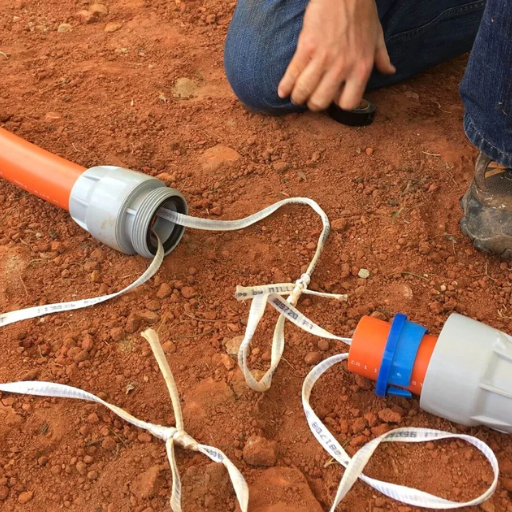
HDPE conduits can be installed using a number of key methods that are appropriate for the site and project conditions. The most common installation methods include direct burial using open trenches where conduits are installed in the trenches; horizontal directional drilling (HDD), which is characterized by minimum surface disturbance and is commonly applicable when crossing roads or water; plowing, a rapid and effective method when domestic or unobstructed areas are concerned; and the slip lining method, and which deploying a narrow HDPE pipe inside a larger HDPE pipe embedded into the soil for better retrenchment of existing pipes and restoring their structural integrity. Each method has its own applicability based on the identified requirements concerning cost, time, or environmental concerns.
Directional Drilling and Its Advantages
In every case, I make sure to let people know of the hidden advantages that directional drilling conceives in installing HDPE conduits. Primarily, it is best in making the least surface disturbance, and as a result, it is great for use in urban areas where people strive to retain some level of road traffic and even landscapes. Furthermore, directional drilling allows for enough vertical and horizontal control of the installation trajectory which also proves to be useful in areas where complex structures have to be built or where there are critical zones such as rivers where there is a need to cross. One more benefit is that post-installation restoration costs are less because the soil has to be disturbed less than when using a trench cut. Trusting in the reliability of this method leads to fewer project durations and thus savings and interest to the customers. Thus, directional drilling is an appropriate and efficient solution in modern HDPE conduit installations, regardless of all the discomforts such activities bring to the infrastructure of a city.
Trenching vs. Plowing: Which is Better?
Having extensive knowledge of the industry, I realize that the decision to trench or plow is influenced by various factors pertaining to the project. To explain:
- Project Environment: However, it may be wiser to opt for a less damaging option of environmentally friendly seaboard farming if the project is set in rural or indeed the open area because that will enable farming to be done at much lower time than that of trowelling. However, in situations where there is limited room trowelling might offer greater advantages as it enables more accurate digs.
- Soil Conditions: The kind of soil would most definitely be a major consideration, and plowing seems to be perfect for softer, non-heterogeneous soil. On the contrary, trowelling can be effective for more types of soils, even for difficult rocky or uneven soils.
- Installation Depth: While it is easier to trowel all things being equal it is important to note that the latter usually has an advantage over the former in heaving as it would be able to bury the wire deeper.
- Cost Considerations: trowelling might take a great deal of time to complete with materials and equipment because the skill and tools required are very high as compared to plowing, which would require the bare minimum, but it is always good to evaluate the cost and the required result to be accomplished and start the next step.
- Environmental Impact: It would be more advisable to sew seaboard traverses as they were found to be less aggressive in terms of disrupting ecosystems and overturning soils because they had minimal exposure to the elements.
- Project Timeline: However, if project time is really a driving factor, then I would expect most site managers to lean towards plowing, which would, in this case, be construed as quickly laying conduits and shortening the work.
In the end, the choice of trenching or plowing should be made keeping these factors in mind and this will make sure that you select the method which fulfills your project goals and limitations to the maximum extent possible.
Installation Challenges and Solutions
As far as the selection of the two methods, which is either trenching or plowing for the installation project, it could be based on the challenges you are likely to face that probably determined it. That is:
- Space Availability in Urban Areas: In congested, overcrowded areas, space for any form of construction is hard to come by. In this regard, trenching is preferred as it provides accuracy in excavation. It makes work involving pre-existing utilities as well as infrastructure less cumbrous.
- Soil Type Suitability: The installation process to be adopted depends chiefly on the type of soil found in the area of construction. On softer soils where rapid and efficient installation of pipes should be done, ploughing would be the right option, whereas sloped or rocky surfaces call for trenching as its effective regardless of the various soil conditions.
- Required Installation Depth:For projects that have additional requirements such as protection of piping systems through deep remoteness or compliance with laws, then a trenching would be the better option. Trenching also as a major advantage of being able to go deep when other methods sit on more shallow depths.
- Budget Constraints: Cost is also one of the considerations. With ploughing systems, the speed by which it is done and the amount of manual labor required ensures that the costs remain very low. On the other hand, the effectiveness of your project requiring trenching and its preferred depth will mean increased manual labor and equipment budget.
- Environmental Considerations: Environmental impact should not be overlooked. From the recent policy changes, it is advocated that ploughing should not disturb soil so much and is therefore more environmentally considerate especially in situations where the need to protect nature is a goal.
- Time Limitations: When schedules are really pressed, ploughing is the best option since it has a fast setting time and helps in accomplishing the deadlines. But if time is more relaxed, then trenching is more accurate and more versatile.
With consideration of these parameters, it becomes possible to determine the installation problem and to choose the solution that best suits the project.
What Makes HDPE Conduit Ideal for Power and Telecommunications?
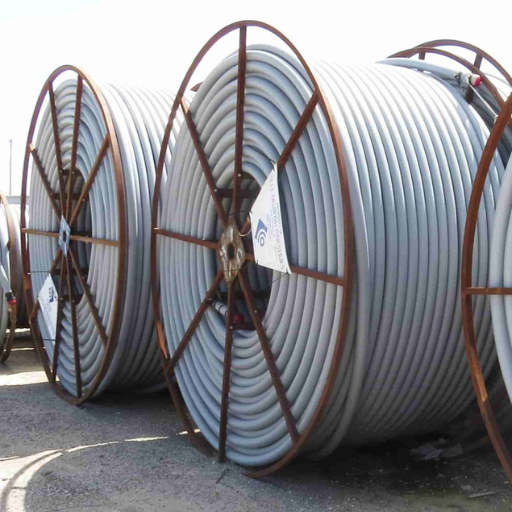
High-density polyethylene (HDPE) conduit is important for electrical and communication thanks to its excellent resistance, flexibility, and protection of the environment. Its tough properties enable it to resist harsh weather, chemicals, and wear and tear, providing durability and dependability across a range of installations. The high-density polyethylene (HDPE) is flexible and can be easily curved and bent; it does not crack, allowing it to accommodate different kinds of terrain and routes. Moreover, the internal smoothness lowers the friction the cables experience, thereby allowing the cables to pull through and get installed more easily while reducing the chances of maintenance. All these features make HDPE conduit the most sought-after in the sector for the protection of critical resources.
High-Density Polyethylene Properties
I claim that high-density polyethylene (HDPE) has great potential for use in conduits for electric and power telecommunications. First of all, it is durable, which is impressive. Even in adverse conditions, HDPE does not suffer from the deterioration that limits the usefulness of other materials. In the aspect of flexibility, Polyethylene high-density piping has the remarkable capacity to bend and shape itself without cracking and conform even to the most challenging environments, allowing wide applications of installations across various geophysical regions. Chemical and abrasive resistance will also be added to ensure that HDPE conduits don’t get damaged over the years. The smooth interior surface results in better cable installation with lower chances of friction and damage to the cables during the pulling process. Thus, in my opinion, all these consequent inherent properties guarantee that HDPE should be considered as one of the best materials for the protection of vital resources.
HDPE Conduit for Power Lines and Utilities
I can say with certainty that HDPE conduit is a secure option for power lines and utilities because of several important factors. First, it has great survivability. HDPE can endure harsh environmental and mechanical stress, which reduces maintenance costs and increases the service life of the assets. Second, the high bending capacity of HDPE conduits enables them to be used for uneven surfaces without cracking. This quality makes installations more efficient and cheaper in different geographical regions. Third, resistance to harsh chemicals and abrasion is another intrinsic property of HDPE that is critically necessary in regions where exposure to certain chemicals will lead to corrosion of the conduit. In addition, HDPE conduits are characterized by a smooth inner surface, which lowers the friction during cable laying. This feature reduces the chance of cable breakage during pulling, hence maintaining the health of the investment. Once these parameters are understood, durability, flexibility, chemical resistance, and low friction will be indisputable as to why HDPE is the material for use in power and utility works.
What Are UL and ASTM Standards?
Key Parameters for Ensuring Quality:
- Durability Standards: These standards permit the HDPE conduits to undergo physical and weather impacts without decomposition hence assuring the durability and reliability of the product.
- Flexibility: UL and ASTM standards confirm that the conduits should be made into such shapes allowing them to become flexible to fit in rugged terrains while remaining intact thus making installations faster and easier.
- Chemical Resistance:The goals detail that the construction of the materials would not yield result to degradation of the conduit under chemically diverse mediums which is highly corrosive.
- Abrasion Resistance: This deals with the erosion of the said surface through the rubbing action of external forces and being able to determine that the said surfaces will not wear out over the passage of time.
- Low Friction Surface: Various tests have been conducted to ensure that the HDPE conduit has a lower side on the inner surface as it is beneficial during the process of installing the cables since it is a friction free process therefore the cables would remain intact.
Compliance by the manufacturers of HDPE conduits is ensured by adhering to UL and ASTM standards . Because it protects the infrastructure, this compliance builds trust in the material safety and its quality.
Does HDPE Conduit Compare to Other Conduit Products?
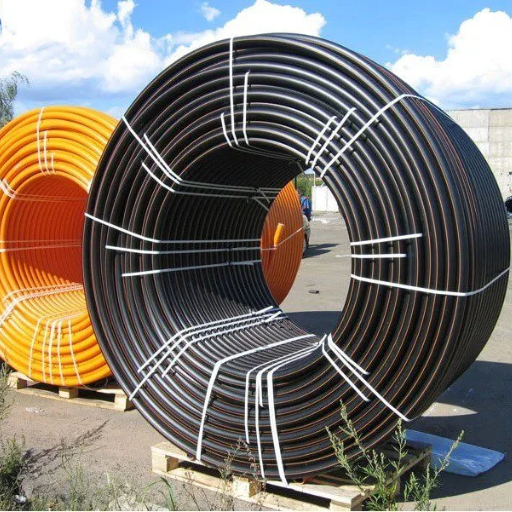
it has become clear to me that HDPE conduits are among the best performing in several critical aspects compared to many alternative conduit products. To start with, HDPE’s durability is unparalleled; it endures extreme weather and physical strain far better than most metal or PVC alternatives. This durability reduces maintenance and increases the lifespan. Furthermore, the pliability of HDPE makes it easier to install in different and difficult terrains, something inflexible metal conduits find hard to do. When compared to other materials, HDPE’s outstanding resistance to chemicals and abrasion makes it perfect for extreme conditions otherwise detrimental to other conduits. Finally, the smooth inner surface of HDPE’s enclosed conduits makes it possible for the cables to be installed more easily without causing much damage. All these elements have led to the widespread preference for HDPE in a majority of infrastructure projects due to its efficiency and economic viability.
Flexible HDPE vs. Rigid Conduits
Calling myself an expert in the industry, I can state without any fear of contradiction that a number of factors substantiate why flexible HDPE conduits are preferable to their conventional rigid counterparts. I now attempt to explain the parameters:
- Durability: When compared to rigid pipes, flexible HDPE has greater strength and impact resistance because it does not crack or break apart during extreme weather conditions. This entails cost-effective replacements and repairs in future.
- Flexibility: The flexibility of HDPE conduits enables them to bend and snake around obstacles and through challenging terrain without providing unnecessary extra effort during installation which would increase the amount of labor work required. If only rigid conduits were that flexible.
- Chemical Resistance: HDPE conduits are well known for their ability to resist chemical corrosion which makes them useful in a number of applications that are subjected to corrosive chemicals or elements. This is unlike most rigid conduits such as those made from metal which are more likely to corrode or degrade in the same environment.
- Installation Ease: The smooth interior of HDPE conduits enables easier pulling of the cables through them, thus diminishing any chances of abrasion damage to the cables that could result from the installation process. This reduces the amount of time that could have been spent during the installation.
- Cost-Efficiency: While the prices of HDPE conduits might be a bit higher than for other rigid conduits when I look at the installation and maintenance that has to be carried out to keep those conduits functional in the long run, I’d say that those costs form a great investment.
Finally, three qualities: flexibility, high durability and low costs allow to consider flexible conduits as a successful solution to be used in many infrastructures.
Corrosion Resistance and Longevity
Expert Insights: Corrosion Resistance and Longevity
Due to their exceptional resistance to corrosion and long life, flexible HDPE conduits surpass many traditional rigid conduits. Their unique properties allow them to be resistant to corrosion when exposed to extreme conditions because they are resistant to a wide variety of chemicals. Such resistance enables HDPE conduits to last for an extended period and reduces the number of required replacements and, therefore, results in considerable cost savings in the long run. HDPE’s physical toughness and resistance to environmental wear and tear also contribute to its durability, making it an excellent candidate for infrastructure for extended periods of time.
Cost-Effectiveness and Environmental Benefits
Industry Expert Analysis: Cost-Effectiveness and Environmental Benefits
Several considerations are important when undertaking the cost-effectiveness analysis of the flexible HDPE conduits:
- Lower Maintenance Costs: Because HDPE conduits are durable and resistant to different environmental factors, they do not require a lot of maintenance. In a way, this cuts down on the amount of labor and material costs throughout their lifespan.
- Long-Term Durability: The life span of HDPE is longer than those of materials used in conventional conduits, thus less number of replacements or repairs are needed. There are cost savings that are realized over time that ends up making the use of HDPE more cost effective.
- Installation Efficiency: Because of the lightweight and flexibility of HDPE conduits, their installation is quicker and easier reducing the labor costs and time of the project. The pulling of cables posteriorly further speeds up the installation, while making it safer.
- Recyclability: Advanced environmental protection is one of the main ecological advantages of using HDPE as a material which is recyclable. Decreasing the environmental footprint is done by using recycled HDPE or recycling conduits at their end of life.
- Reduced Energy Consumption: Using and maintaining the HDPE conduits effectively minimizes energy requirements which are advantageous in terms of environmental conservation as well as operational expenditure.
These parameters demonstrate that HDPE conduits are economical and green hence they are a perfect candidate for sustainable construction projects.
Reference
- Benefits & Advantages of HDPE Conduit – WL Plastics: This source discusses the physical properties and advantages of HDPE conduit, including impact resistance and durability.
- Benefits of HDPE Conduit – Plastic Pipe Institute: This page highlights the unmatched corrosion and chemical resistance of HDPE conduit, along with its flexibility and durability.
- Specifying HDPE Conduit – Plastic Pipe Institute: This document offers guidance on the latest industry product standards for HDPE conduit.
Frequently Asked Questions (FAQs)
Q: What are the benefits of using HDPE conduit pipes for power and communications?
A: HDPE conduit pipe offers unmatched corrosion and chemical resistance, is durable and available in long continuous lengths, and is ideal for both power and communications applications. It meets or exceeds various standards such as ASTM D3350 and NEMA TC-7, ensuring high quality and reliability.
Q: How does HDPE conduit compare to traditional materials?
A: HDPE conduit, made from high density polyethylene, provides superior flexibility, durability, and resistance to environmental stress cracking compared to traditional materials. It also offers a higher impact resistance and can withstand temperature variations better.
Q: What sizes and specifications are available for HDPE conduit pipes?
A: HDPE conduit pipes come in a variety of sizes and specifications, including different diameters and wall thicknesses like SDR 13.5 and IPS. They are available in continuous lengths and can be customized based on specific project requirements.
Q: Can HDPE conduit pipes be used for both power and communications installations?
A: Yes, HDPE conduit pipes are versatile and can be used for both power and communications installations, including applications like CATV, FTTH, and CIC (Cable in Conduit).
Q: Where can I purchase quality HDPE conduit products?
A: You can shop by brand or shop by category from reputable suppliers like United Poly Systems. They offer a range of HDPE conduit products that meet industry standards.
Q: Are there specific standards that HDPE conduit pipes must meet?
A: Yes, HDPE conduit pipes must meet or exceed standards such as ASTM F2160, UL 651A, and Article 353 of the NEC. These standards ensure that the conduit is suitable for electrical, communications, and other utility applications.
Q: What installation accessories are available for HDPE conduit?
A: Installation accessories for HDPE conduit include inner duct, pull tape, tracer wire, and casing options. These help facilitate efficient and secure installation of the conduit.
Q: How can I request a quote for HDPE conduit pipes?
A: To request a quote, you can contact us or reach out to suppliers like United Poly Systems directly. They can provide detailed pricing based on your specific project needs and specifications.
Q: What makes HDPE conduit ideal for outdoor installations?
A: HDPE conduit is ideal for outdoor installations because it offers unmatched resistance to corrosion, UV rays, and chemicals. It maintains its integrity in harsh environmental conditions, making it a reliable choice for outdoor use.
Q: Is HDPE conduit available in co-extruded designs?
A: Yes, HDPE conduit is available in co-extruded designs, which provide additional strength and protection for the cables housed within. This enhances the overall durability of the conduit system.





